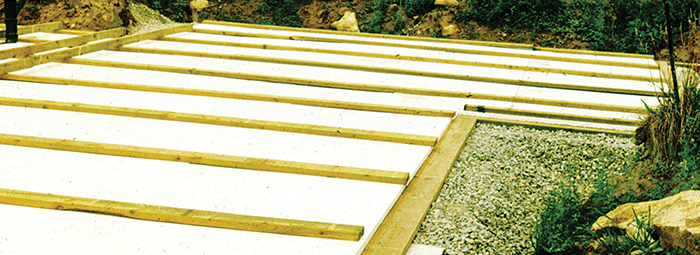
©2020 This excerpt taken from the article of the same name which appeared in ASHRAE Journal, vol. 62, no. 8, August 2020.
About the Author
Joseph W. Lstiburek, Ph.D., P.Eng., is a principal of Building Science Corporation in Westford, Mass. Visit www.buildingscience.com.
I did a bunch of wood foundations in the early 1980s. Time of Blondie, Kim Carnes and the Police. I learned a great deal—some good, some bad. The bad taught me a lot of things to avoid. At the end of my “wood period,” I pretty much felt that concrete and masonry foundations were the way to go. It’s not that the wood didn’t work. It just did not feel worth the effort at the time. I had a “steel period” as well, but that discussion is for another time.
Why talk about wood foundations now? Times change. Folks want to stop using concrete and masonry. The ghosts of Roman engineers are appalled. Apparently, after getting rid of natural gas we also need to get rid of concrete and masonry to become carbon neutral. I am not going to get into that discussion beyond saying lots of important folks are asking me how to do wood foundations. We refer to these important folks as “clients.”
You want to do wood—I got your back. You want to not use natural gas—I got your back. I view my role as to keep clients out of trouble. And boy do I know trouble. The plan in this discussion is to go through some prior history and end with how I think you can do a wood basement, a wood crawlspace and a wood-slab-on-grade while staying out of trouble—based on what worked and what did not work, way back. It gets even better. We can add new materials and new experience to the old.
When I did my first wood basement, I went with concrete footings. Made things a lot easier. You have no idea how difficult it is to get a crushed stone drainage pad level. For real level. Not approximately level. Level. Level enough to build a building on top of. So why go with the wood at all, if I was using concrete footings? There was no carbon issue back then. I was building out in the boondocks. Real boondocks. Canadian boondocks. I had to mix concrete by hand. OK, I had a gas-powered mixer. You get the idea. No concrete truck to come and place the concrete, unless you wanted it to drive up from civilization, and you had to place the concrete in a real hurry because you did not have much time before the stuff would set up. Learned a lot about additives that slowed things down back in the day.
I knew enough about wood back then to not rely on “preservatives.” The plan was to keep the wood warm and dry. Fool it into thinking it was above grade—or, even better, inside. The obvious strategy was to insulate it on the outside and provide drainage. And when I say insulate it on the outside, I mean outside the walls and underneath. Separate the wood from the ground with insulation. And when I say drainage I mean real drainage outside and underneath. Lots and lots of crushed stone and—new at the time—draining insulation.
The first real draining insulation available for use below grade was rigid fiberglass boards intended to be installed against concrete foundation walls. The oriented and layered nature of the fiberglass board made the system behave much like a thatched roof. It was easier for liquid water to stick to a fiber and run down the fiber with surface tension and gravity running the show rather than have the water jump inward from fiber layer to fiber layer.
It was amazing. Only the outer 0.25 in. (6.4 mm) of fiberglass would get wet, providing the drainage, and the remaining fiberglass would stay dry. It would keep the foundation wall “warm and dry.” In Canada I couldn’t get rigid fiberglass stuff that was to be used below grade, so I used fiberglass insulation boards typically used in commercial flat roofs.
After a couple of years we got grooved rigid expanded polystyrene (EPS) and extruded polystyrene (XPS) insulation that provided below grade drainage.
Over time I used a combination of draining fiberglass and draining XPS on the exterior of the basement wall wood framing and sheathing—over a layer of sheet polyethylene acting as a water control layer.
Read the Full Article
ASHRAE Members have free access to the full-text PDF of this article as well as the complete ASHRAE Journal archives back to 1997 in the Free Member Access Area.
Non-members can purchase features from the ASHRAE Bookstore. Or, Join ASHRAE!
Return to Featured Article Excerpts
Return to ASHRAE Journal Featured Article Excerpts